Bro. Mark Elder digs through old documents to dazzle underpass
DePaul has seen a lot of movers and shakers since its inception in 1898. There was the famous basketball player George Mikan, who went on to redefine the sport altogether. Both Daleys attended DePaul, as did the jazz pianist Ramsey Lewis.
But hidden among those marquee names are equally important and less valorized alumni — people such as Benjamin Hooks, a civil rights leader and the executive director of the NAACP, or Rev. Francis X. McCabe, DePaul’s third president who opened the university’s doors to women for the first time, or Mabel “Dolly” Landry-Stanton, an African-American DePaul alumna who overcame racial discrimination at university track events and went on to compete in the 1952 Helsinki Olympics.
In an effort to honor these forgotten icons of DePaul’s past, Brother Mark Elder, C.M., the university’s quirky artist-in-residence, masterminded an art installation beneath the Fullerton “L” tracks to honor them alongside their more well-known counterparts. Alongside a team of students from his ART 291 class, he painted the pillars beneath the station in the fall of 2016 with events and figures that chronicle 120 years of DePaul’s history to honor those who have shaped the DePaul community. Now Landry-Stanton’s image beams down at passersby from her honorary post on a pillar beneath the Fullerton CTA stop — a tribute with the added benefit of beautifying the otherwise barren thoroughfare just west of Cacciatore Stadium.
Elder said the art installation, which he affectionately named “The Little School Under the ‘L’…Under the ‘L,’” was intended to make people think about the events that have shaped the university.
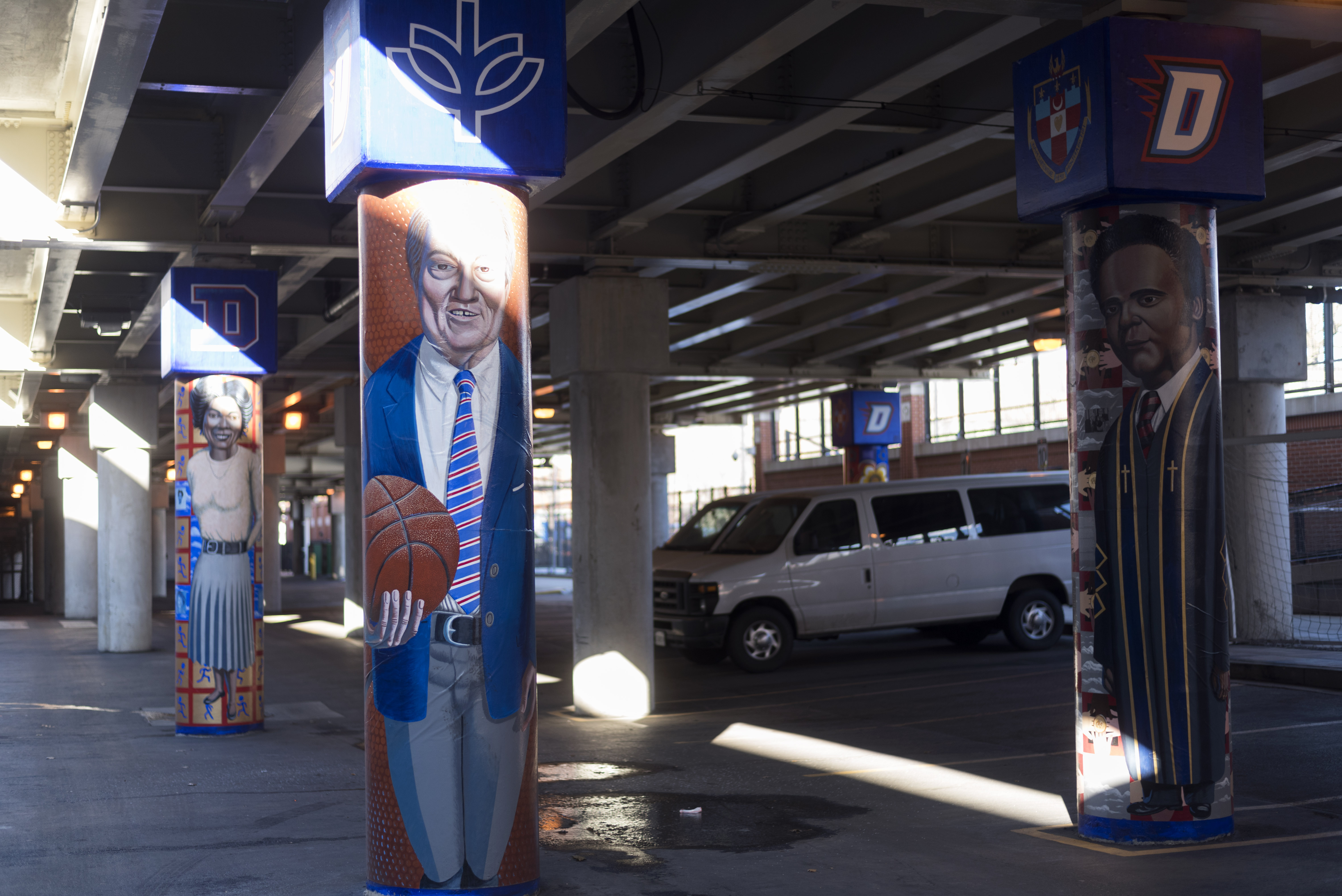
Pillars under the Fullerton Red Line station next to DePaul University’s Cacciatore Stadium. (Cody Corrall, 14 East)
“I don’t want to sugarcoat anything,” Elder said. “As much as I don’t even want to mention his name, the whole Milo Yiannopoulos event is something to consider memorializing [on the pillars]. It needs to be honest. It needs to depict both the good and the bad. We’re not going to ignore something just because it doesn’t paint us in a great light.”
Elder is a visible figure for most DePaul students. Dressed more appropriately for a job on a Texas ranch than at an urban liberal arts school, he walks the streets of DePaul’s Lincoln Park campus clad in a big Stetson cowboy hat, a buckskin jacket with tassels flapping across the chest and brown leather cowboy boots.
“I consider the whole getup my habit,” Elder said, referring to the garments worn by devout members of religious congregations. “It’s a way to encourage people to come and interact with me. As an artist, that’s one of the most important things.”
His eccentric outfits garner him a small amount of celebrity wherever he goes. He recalls walking around in Paris when a young French man passed by him and asked him in English, “Hey, where’s your horse, cowboy?”
His artistic style is also unique. The portraits are depicted in an almost cartoonish way, with enlarged heads and elongated torsos similar to a bobblehead doll.
To be able to wrap the artwork around the curvature of the pillar, he uses a flexible canvas of acrylic gel, which he form-fits to the pillar after painting the surface while it’s flat to prevent distortion of the images.
Elder has a knack for digging through the university archives to find notable alumni and characters from the university’s past that people may have forgotten about. He sifts through yearbooks and documents dating back to DePaul’s early beginnings.
Through digging through old yearbooks, he stumbled upon a photo of DePaul’s men’s golf team from the 1920s and noticed something peculiar about the captain of the team: he only had one arm. That captain led the team to the state championship that year, and will most likely be memorialized with a pillar of his own soon enough, Elder said.
Elder is already starting to plan for more additions to the pillars. He plans on doing one that would commemorate the Sheffield Neighborhood Association’s contributions to improving living conditions for renters in the Lincoln Park in the late 1950s.
“We didn’t have any dorms back then,” Elder said. “There were a considerable number of students who took up very small apartments in the area, a lot of which were in wretched condition. There were absentee landlords and these buildings were prone to fires.”
The Sheffield Neighborhood Association formed to combat these conditions in 1959 and remains an active pillar of the DePaul community to this day.
Elder’s mind is rarely restful. He’s constantly dreaming up new ideas to enhance often-overlooked spaces in the community for the enjoyment of anyone, not just the DePaul community members, who happens by them.
Bill Winthrop, a resident of the area around DePaul, regularly uses the thoroughfare as a cut-through on his walk home from the Fullerton stop. He says the bright, vibrant colors of the pillars have made that stretch of his walk that much more pleasant.
“Even though I didn’t go to DePaul and I don’t know who any of these people are, it piqued my interest,” Winthrop said. “They drew me in so that I read the plaques describing the depiction of each image. It’s quite well done.”
Header photo by Cody Corrall.



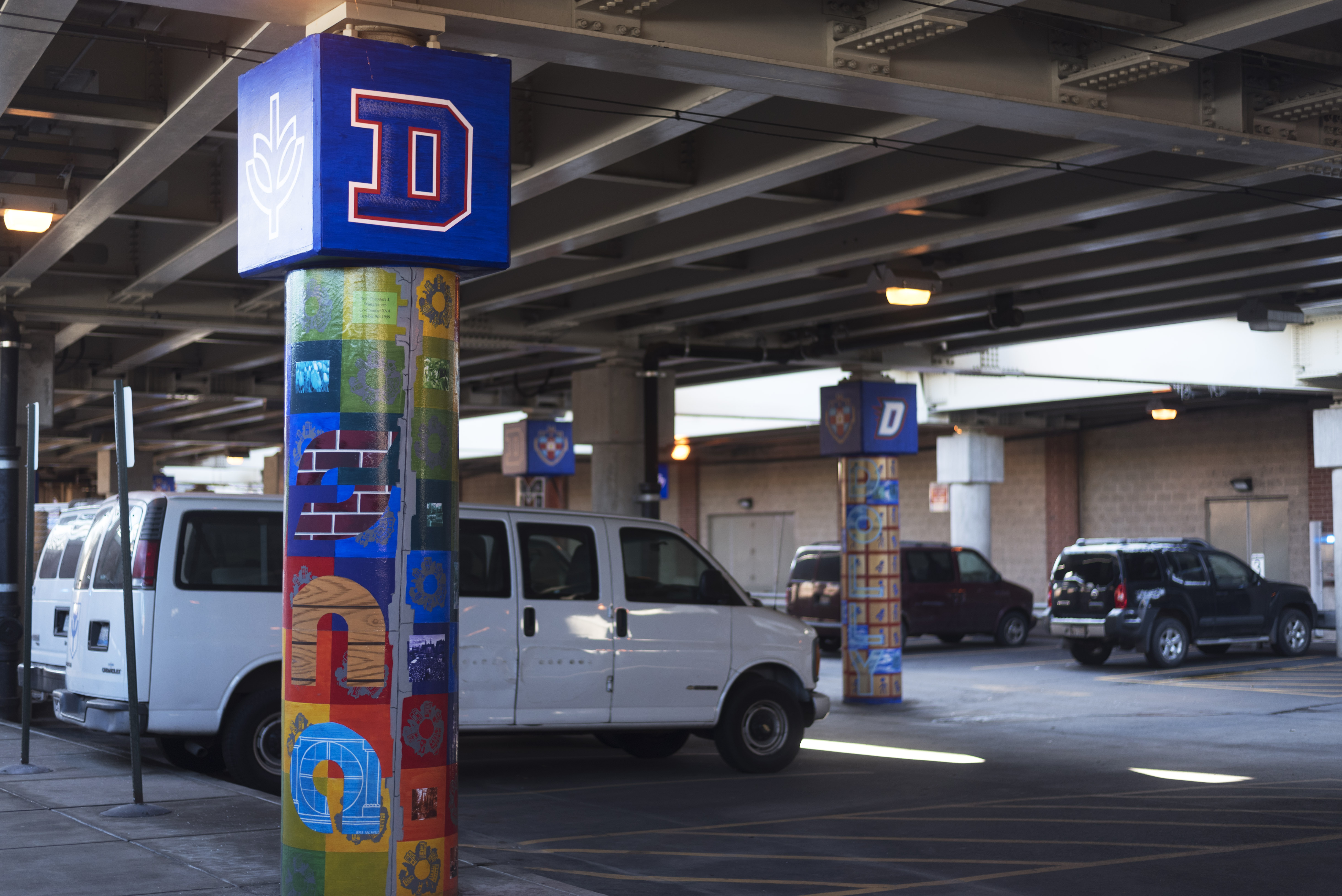
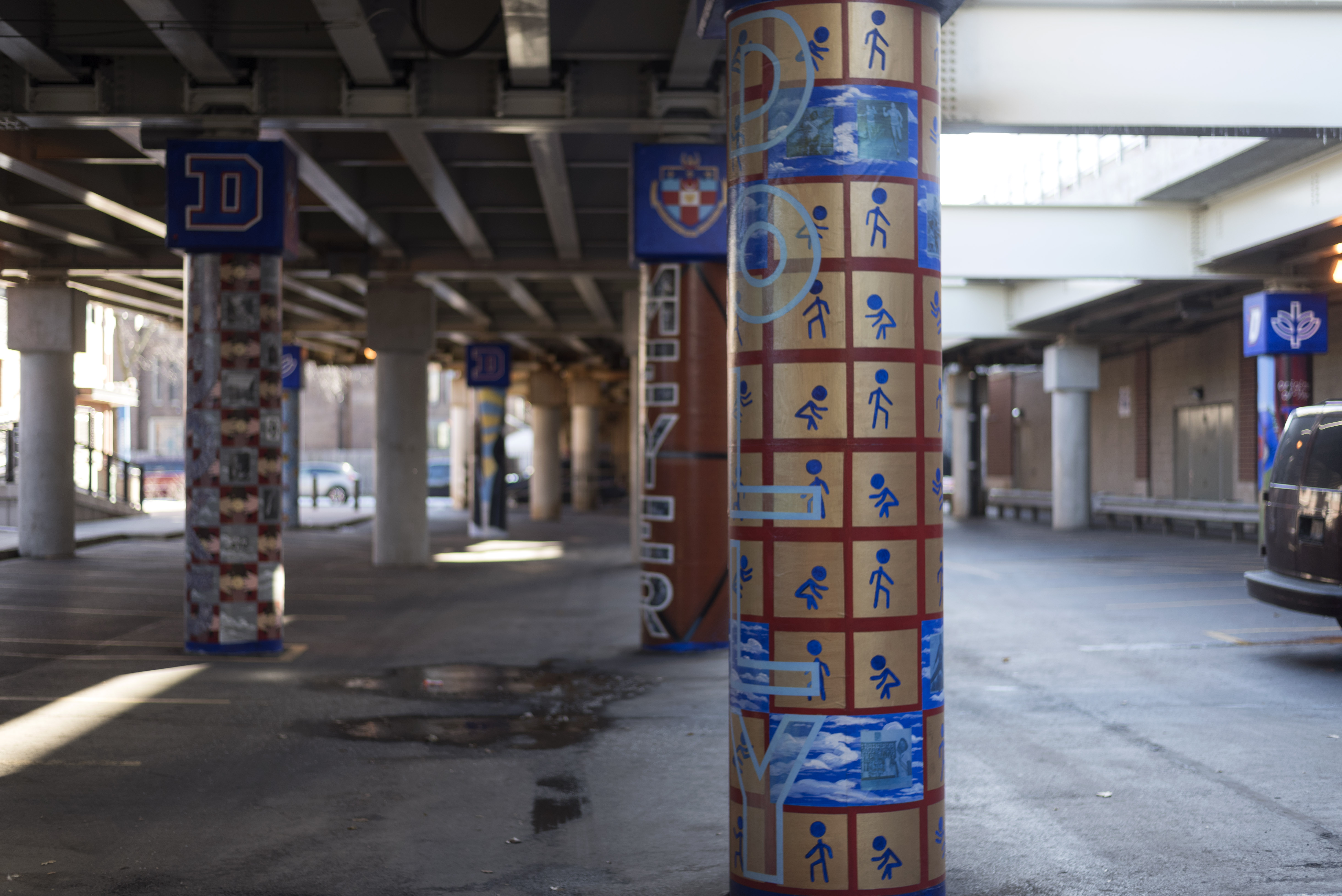
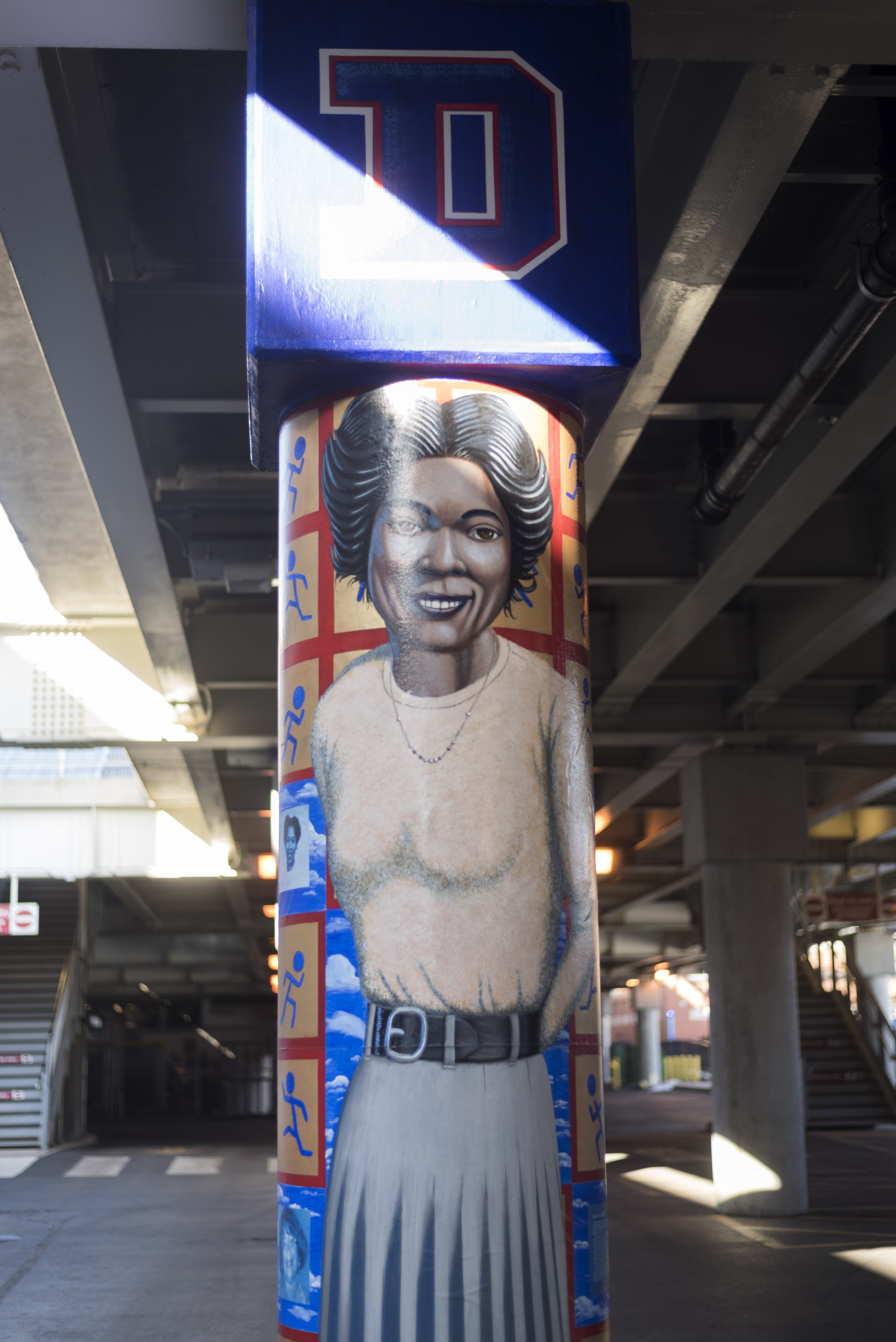
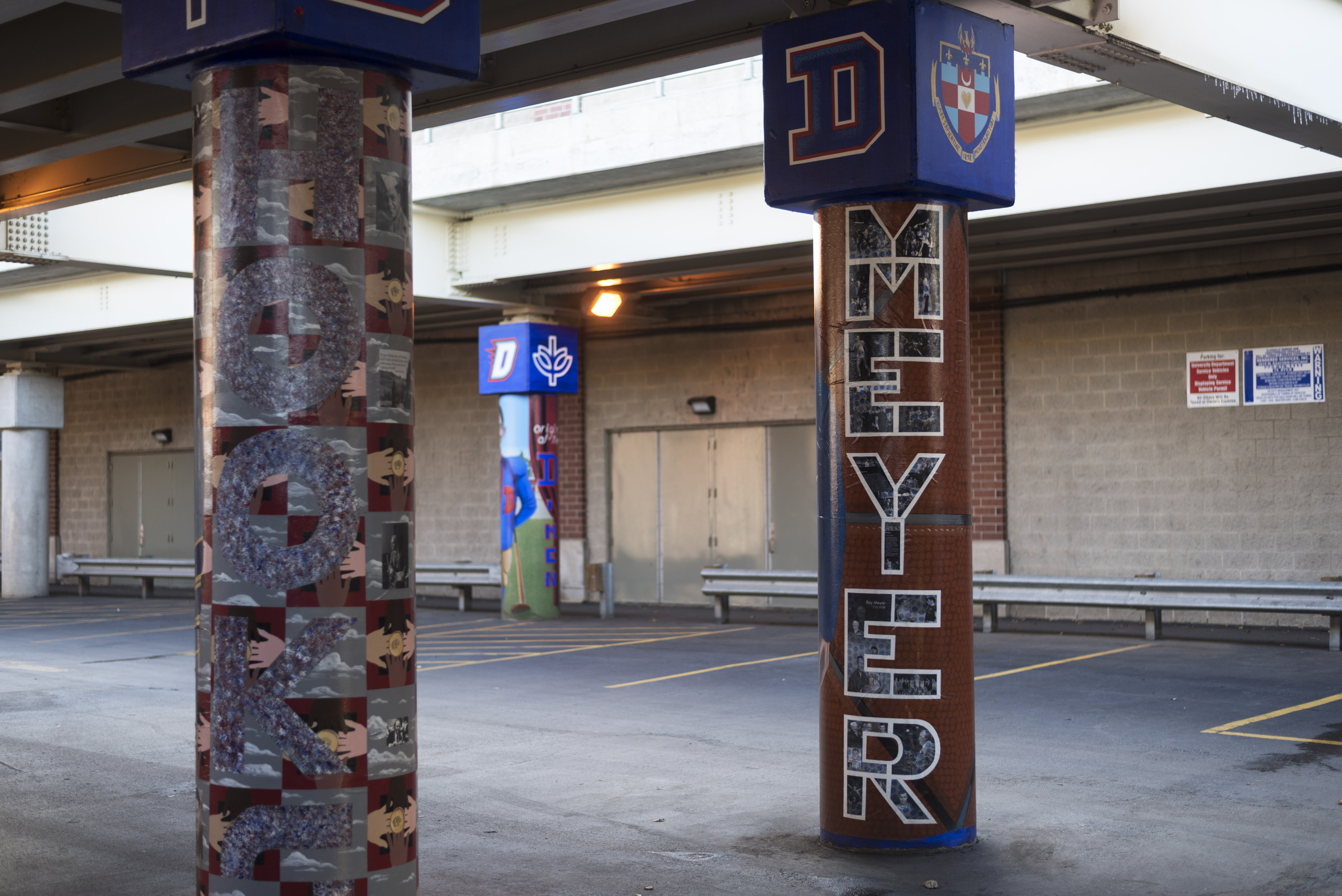
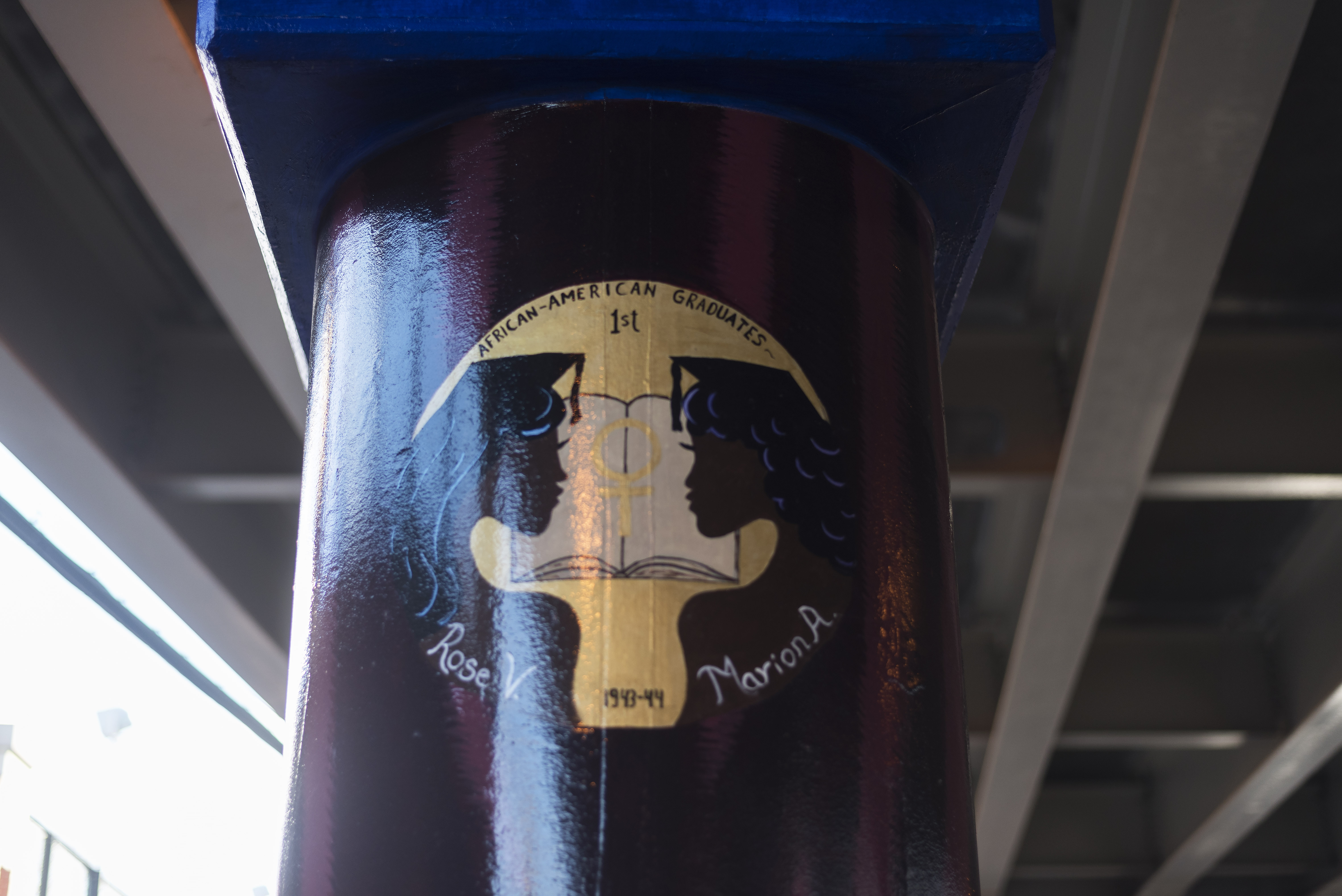

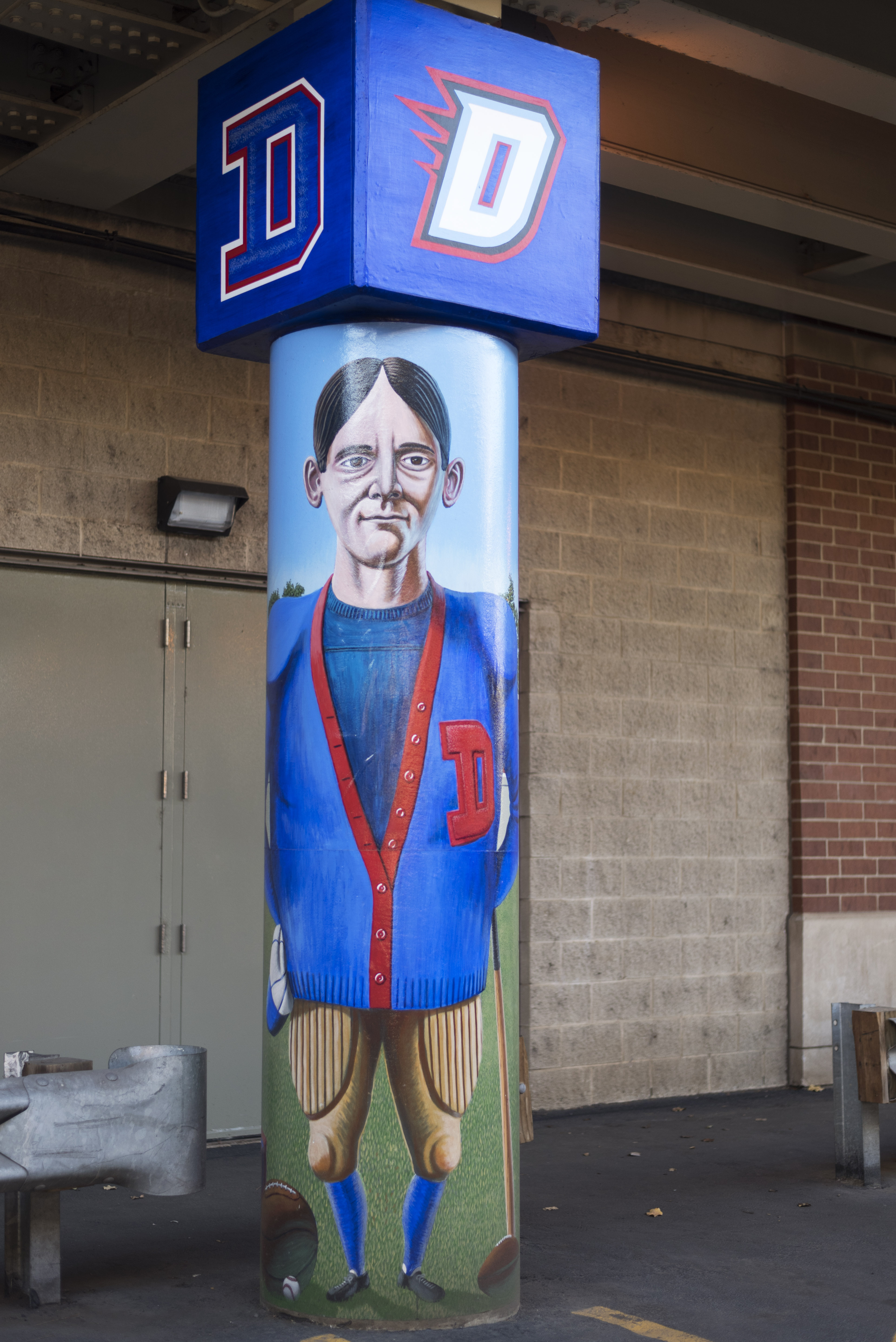


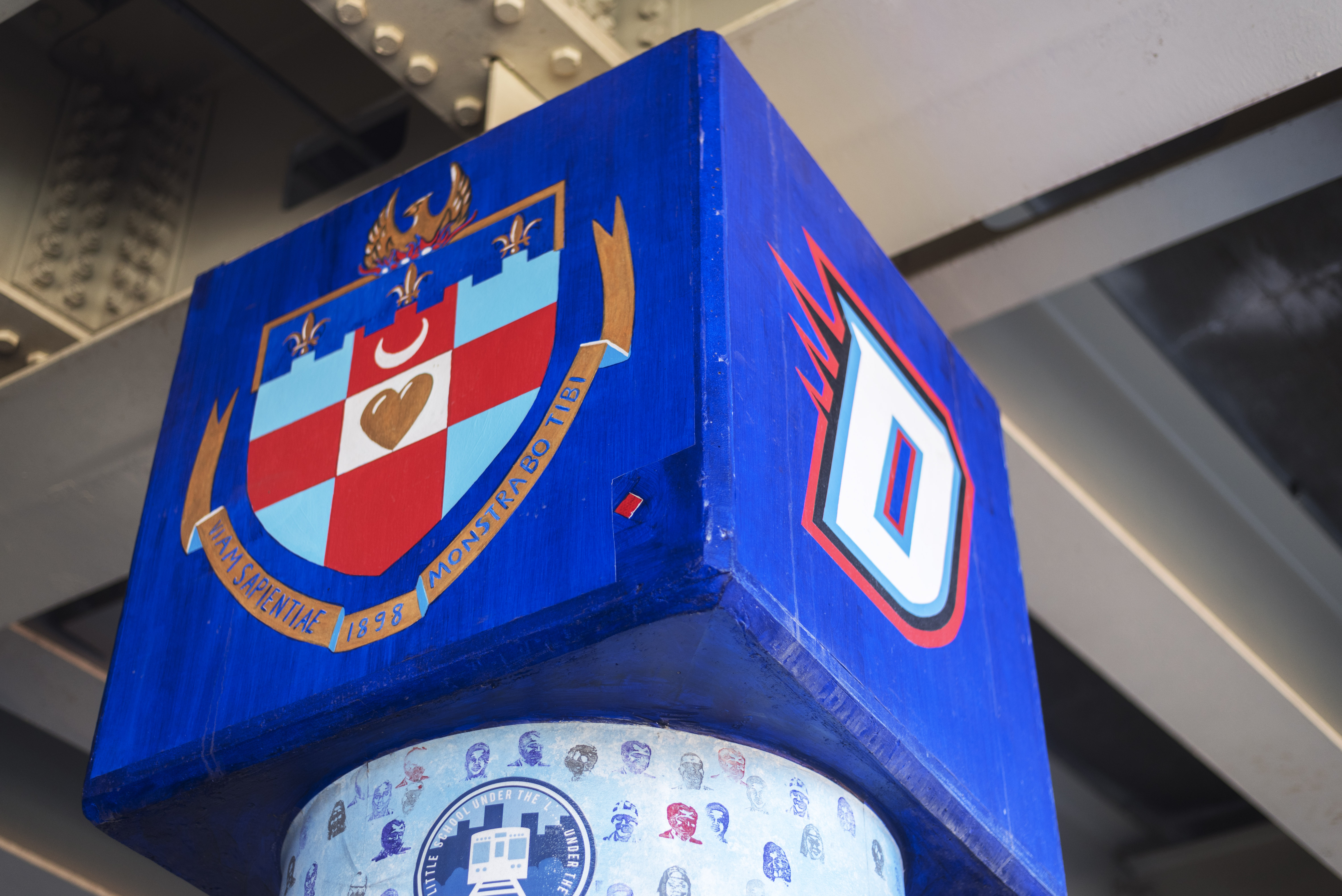
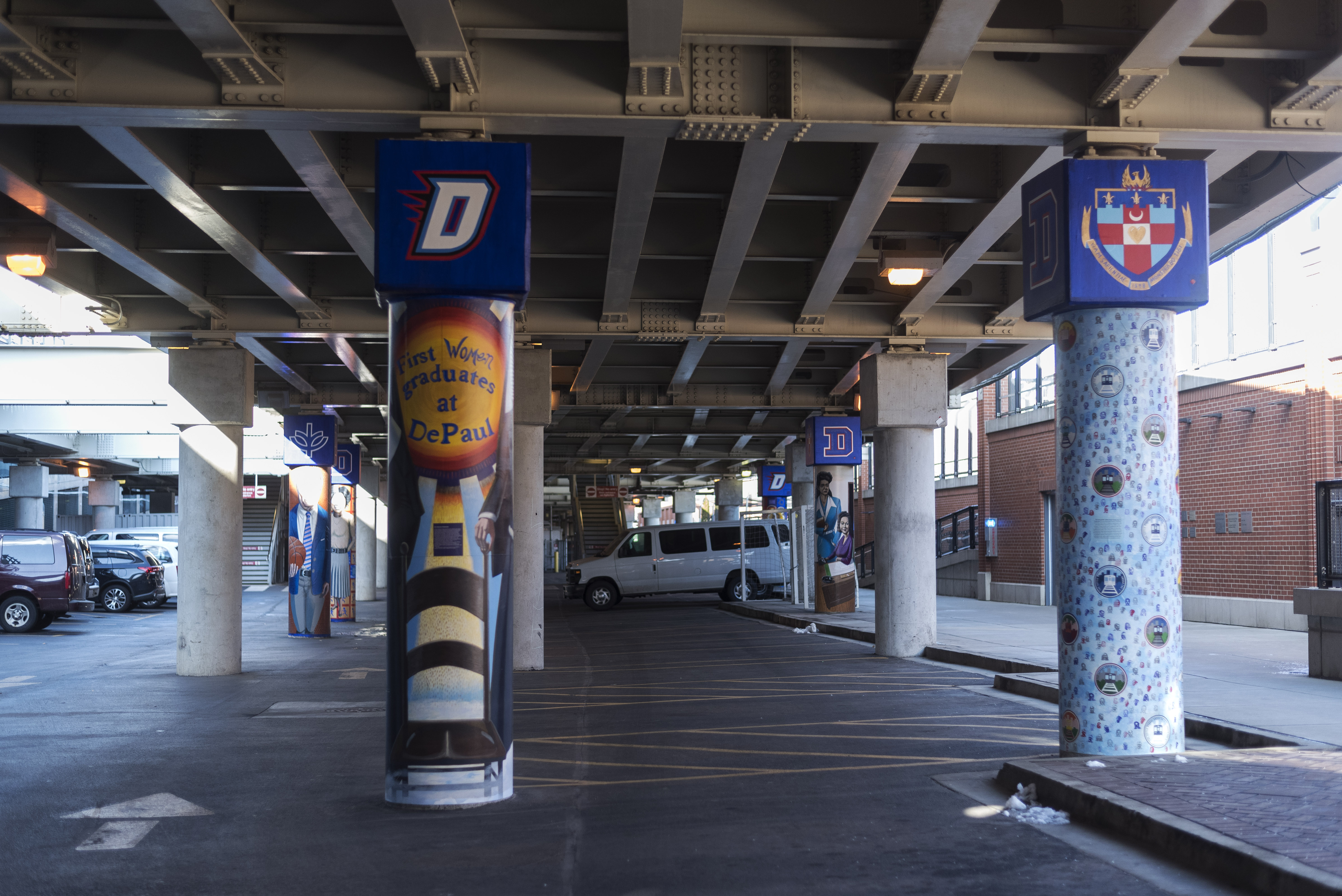
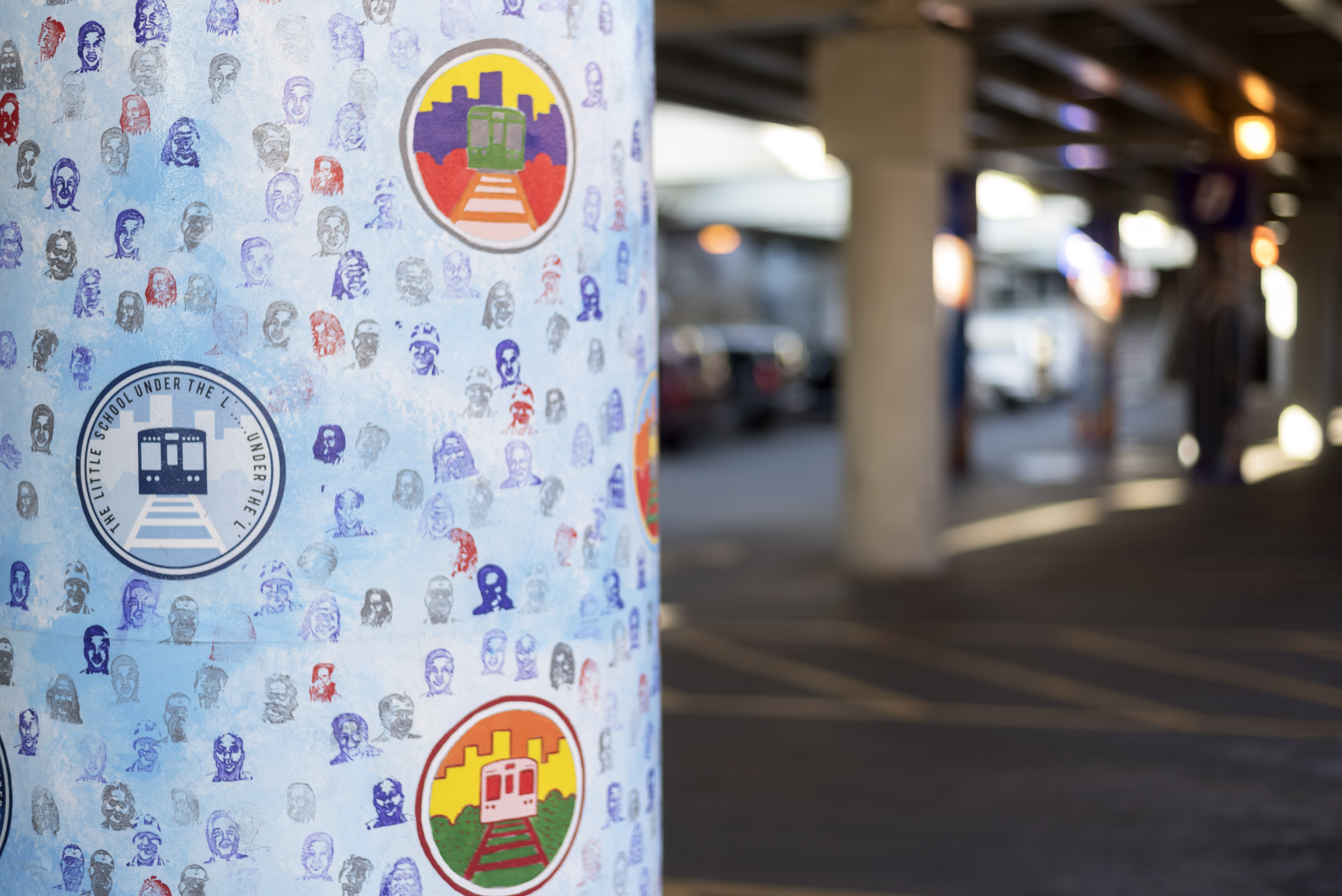

NO COMMENT